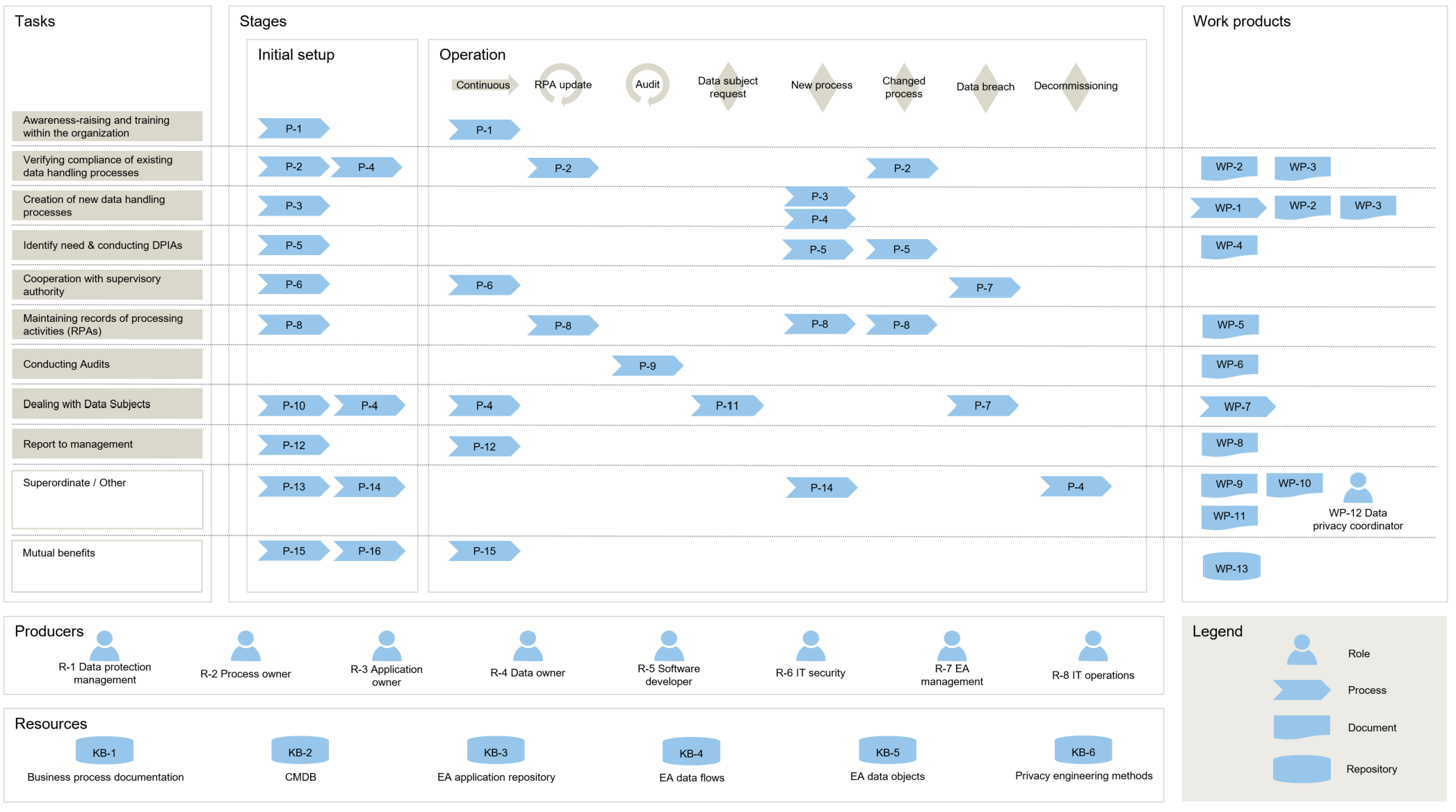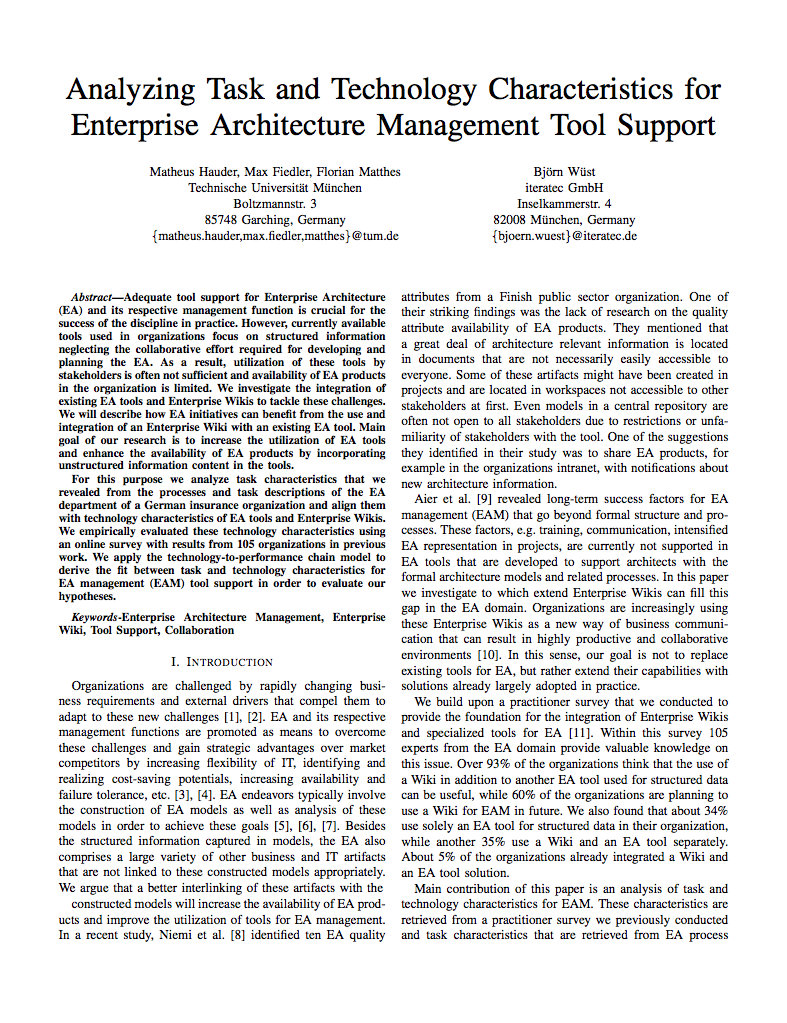Three sebis research papers were presented at the 53rd Hawaii International Conference on Systems Sciences (HICSS) 2020:
Huth, D., Burmeister, F., Matthes, F., and Schirmer, I. 2020. "Empirical Results on the Collaboration Between Enterprise Architecture and Data Protection Management during the Implementation of the GDPR"
Abstract: The European General Data Protection Regulation’s (GDPR) large imminent fines cause companies worldwide to undertake major efforts for privacy compliance. Any company doing business with European customers has to adhere to new processing principles and documentation requirements, and provide extensive access rights to data subjects.
Enterprise architecture management (EAM) provides a theoretical and methodical framework to align business and IT and has been used, among others, to identify and address concerns that arose from regulation.
In this work, we report results from 24 qualitative interviews with 29 enterprise architects on how EAM supports the work of data protection management (DPM) experts. We derive a conceptual framework with four different levels of EAM support for DPM, and discuss high-level recommendations for each level.
Burmeister, F., Huth, D., Schirmer, I., Drews, P., and Matthes, F. 2020. "Enhancing Information Governance with Enterprise Architecture Management : Design Principles Derived from Benefits and Barriers in the GDPR Implementation"
Abstract: Businesses today are increasingly dependent on how they transform information into economic value, while simultaneously being compliant with intensified privacy requirements, resulting from legal acts like the General Data Protection Regulation (GDPR). As a consequence, realizing information governance has become a topic more important than ever to balance the beneficial use and protection of information. This paper argues that enterprise architecture management (EAM) can be a key to GDPR implementation as one important domain of information governance by providing transparency on information integration throughout an organization. Based on 24 interviews with 29 enterprise architects, we identified a multiplicity of benefits and barriers within the interplay of EAM and GDPR implementation and derived seven design principles that should foster EAM to enhance information governance.
Kleehaus, M., Corpancho, N., Huth, D., Matthes, F. 2020. "Discovery of Microservice-based IT Landscapes at Runtime: Algorithms and Visualizations"
Abstract: The documentation of IT landscapes is a challenging task which is still performed mainly manually. Technology and software development trends like agile practices and microservice-based architectures exacerbate the endeavours to keep documentation up-to-date. Recent research efforts for automating this task have not addressed runtime data for gathering the architecture and remain unclear regarding proper algorithms and visualization support. In this paper, we want to close this research gap by presenting two algorithms that 1) discover the IT landscape based on historical data and 2) create continuously architecture snapshots based on new incoming runtime data. We especially consider scenarios in which runtime artifacts or communications paths were removed from the architecture as those cases are challenging to unveil from runtime data. We evaluate our prototype by analyzing the monitoring data from 79 days of a big automotive company. The algorithms provided promising results. The implemented prototype allows stakeholders to explore the snapshots in order to analyze the emerging behavior of the microservice-based IT landscape.

